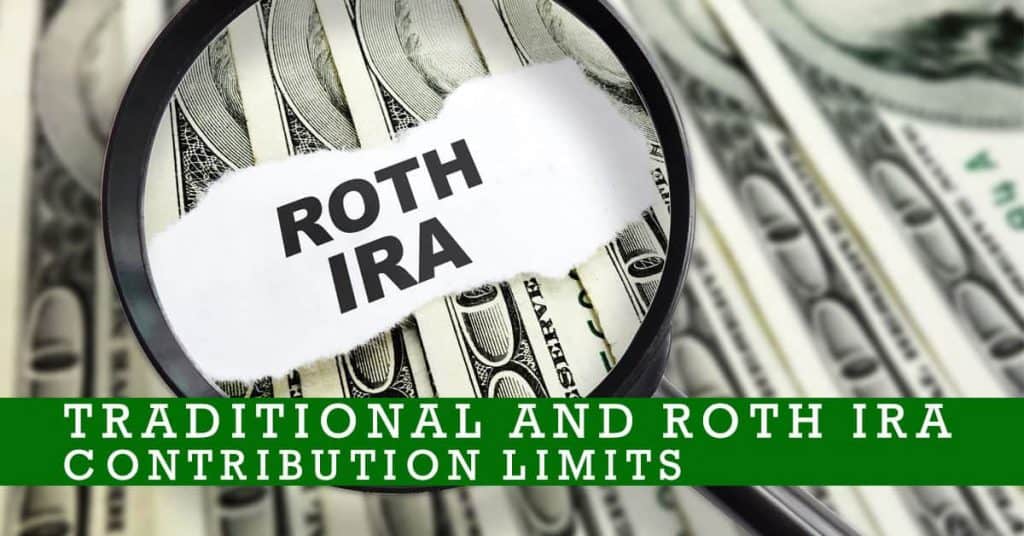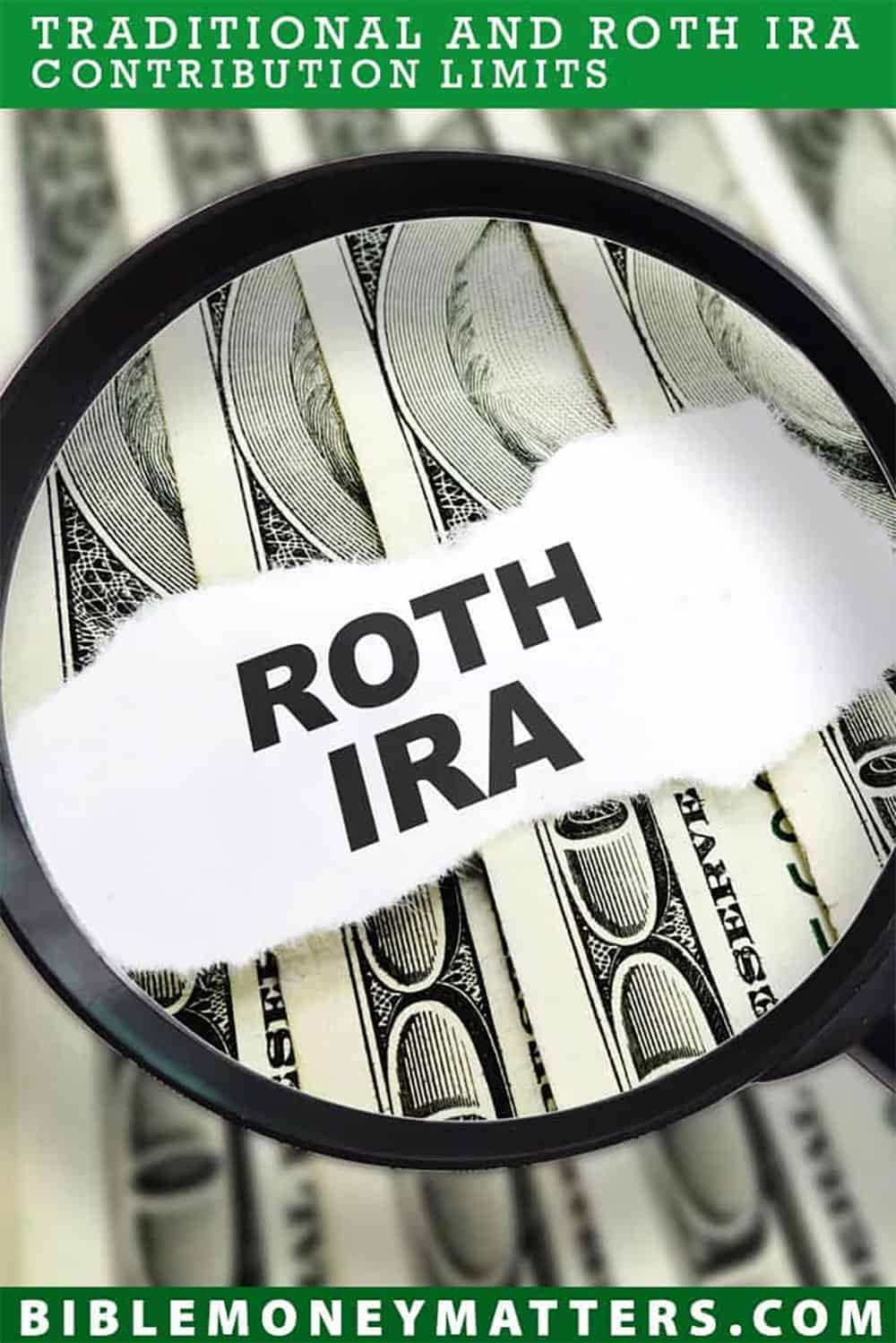A few days ago I wrote a quick post giving full details about what changes we could expect to see in the 2024 401k contribution limits.
So how much was changing?
The short answer is that we saw an increase in the contribution limit from last year, bumping the limit up to $23,000.
If you have an IRA in addition to or instead of a company 401k, you’ll want to make sure to stay on top of any increases in contribution limits there as well.
Contribution limits are lower in the IRA than in the 401k to begin with, so if an increase happens, be sure to take advantage.
So what is happening with the IRA contribution limits this year?
The IRS has announced that the amount that you can contribute to a traditional or Roth IRA for 2024 will go up again this year.

Don’t have a Roth IRA yet? Check out these posts talking about the best places to open a Roth IRA or our list of best robo advisors.
Contribution Limits For Roth & Traditional IRA In 2024
The contribution limit for both Roth and Traditional IRAs will increase by $500 this year.
If you are under 50 years old that means you can now contribute $7,000 to your IRA accounts, an increase from last year.
50+ years old? You’re also able to make a catch-up contribution of $1,000 – which pushes the contribution limit to $8,000.
The limit for the Roth and traditional IRA is a shared limit, so keep in mind if you contribute to one, the limit for the other is reduced. The $7,000 is a single combined limit if you want to max out your contributions.
For example, if you contribute $4,000 to your Roth IRA, you could only contribute $3,000 to your traditional IRA (bump that up by $1,000 if you’re over 50).
Here’s a table showing the 2024 Traditional and Roth IRA contribution limits, along with the limits in years past.
| Year | Age 49 and Below | Age 50 and Above |
|---|---|---|
| 2002-2004 | $3,000 | $3,500 |
| 2005 | $4,000 | $4,500 |
| 2006-2007 | $4,000 | $5,000 |
| 2008-2012 | $5,000 | $6,000 |
| 2013-2018 | $5,500 | $6,500 |
| 2019-2022 | $6,000 | $7,000 |
| 2023 | $6,500 | $7,500 |
| 2024 | $7,000 | $8,000 |
AGI Based Income Phaseouts For Roth IRAs In 2024
Roth IRAs have an income phaseout. What that means is once you reach a certain level of income the amount you can contribute goes down, and gets completely phased out at the upper level of the range.
For Roth IRAs single taxpayers, head of household, or married filing separately (IF you didn’t live with your spouse during the year) with an annual Modified Adjusted Gross Income (MAGI) over $146,000, you’ll begin to see the allowable contribution drop until at $161,000 it goes away completely. The limits for married filing jointly investors are $230,000-$240,000. Here are the limits:
| Roth IRA Income Limits For Contributions (2024) | Contributions are reduced if income is above this amount | Contributions are not available if income exceeds this amount |
|---|---|---|
| Single/Married Filing Separate IF you didn't live together during the year. | $146,000 | $161,000 |
| Married Filing Jointly or qualifying widow or widower. | $230,000 | $240,000 |
| Married filing separately IF you lived with your spouse at any point during the year. | $0 | $10,000 |
So what does this mean in practice?
If your income is less than the number in the first column, you can contribute the full $7,000 for those younger than 50. If you’re 50 or older you can contribute $8,000.
If your income is higher than the amount in the second column, you aren’t able to contribute to a Roth IRA in 2024, barring something like a back-door Roth IRA conversion.
If your income falls neatly into the range above, you can still contribute a prorated amount.
For single taxpayers, for every $1,500 you make above the number in the first column, you’ll lose 10% of your $7,000 max contribution.
For married taxpayers, you’ll lose 10% for every $1,000 in income above the first column amount. Here’s an example of how this looks from Motley Fool:
As an example, say that you’re 48, married, and have a joint income of $237,000. Looking at the chart above, your income exceeds the $230,000 lower threshold by $7,000. At a rate of 10% per $1,000, that means that you’ll lose 70% of your contribution. For someone younger than 50 with a maximum of $7,000, the reduction will be $4,900, leaving you with a final allowable contribution of $2,100.
Contributions Can Be Made Until Tax Day 2024 For 2023!
If you have a Traditional IRA or Roth IRA, one thing a lot of people don’t realize is that the time to contribute to your account doesn’t end when the clock strikes midnight on December 31st. If you haven’t contributed the allowed contribution amount by December 31st, you have until tax day to contribute to your account for the previous year.
You can still open a Roth IRA or a traditional IRA and contribute the fully allowed amount up until tax day. Tax day for 2024 will fall on Monday, April 15th, 2024. So not only can you contribute at the end of this year, you can contribute right up until your taxes are due!
If you do make a contribution in 2024 before tax day, make sure you specify which tax year the contribution is being made for.
Keeping Tabs On Limits And Phaseouts
When you’re contributing to a Roth or Traditional IRA you’ll want to keep an eye on the limits and phaseouts.
If your income is reaching phaseout thresholds, you may want to consider reducing your taxable income by contributing to an account like a 401k, or reducing your taxable income by making charitable contributions, etc so that you can continue to be eligible for the account type.
Are you increasing your contributions this coming year, even though the limits haven’t increased?





Share Your Thoughts: